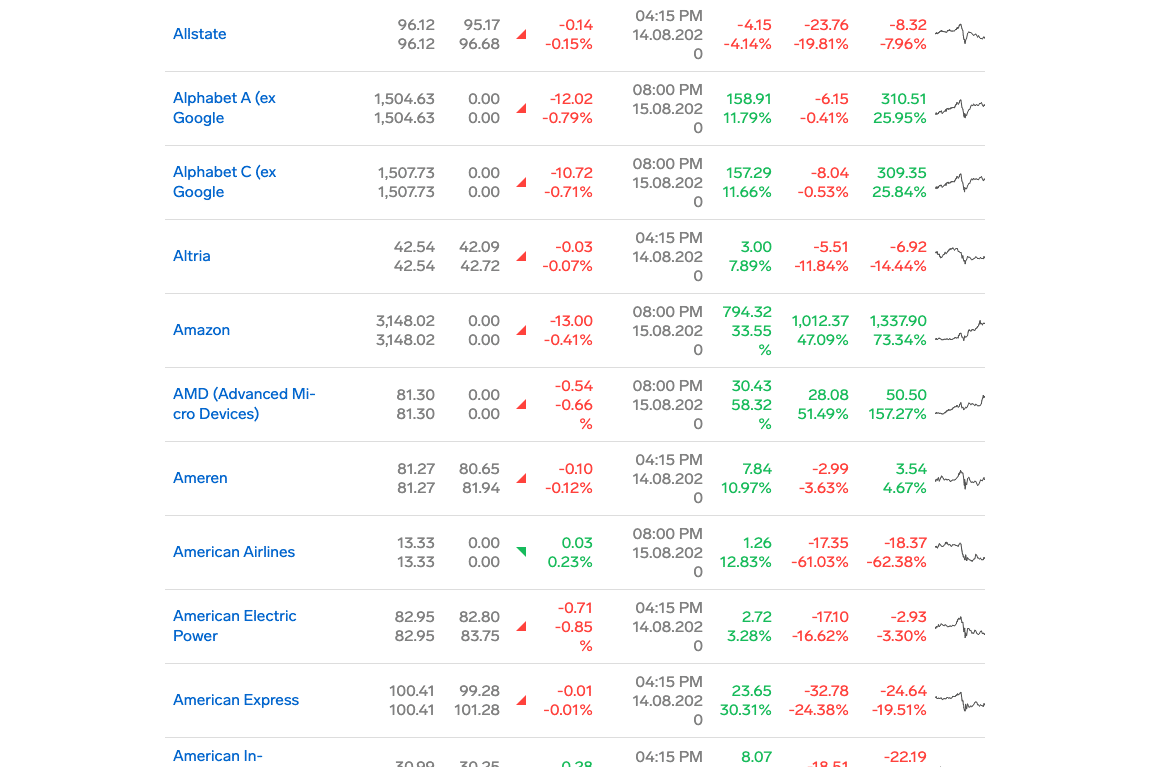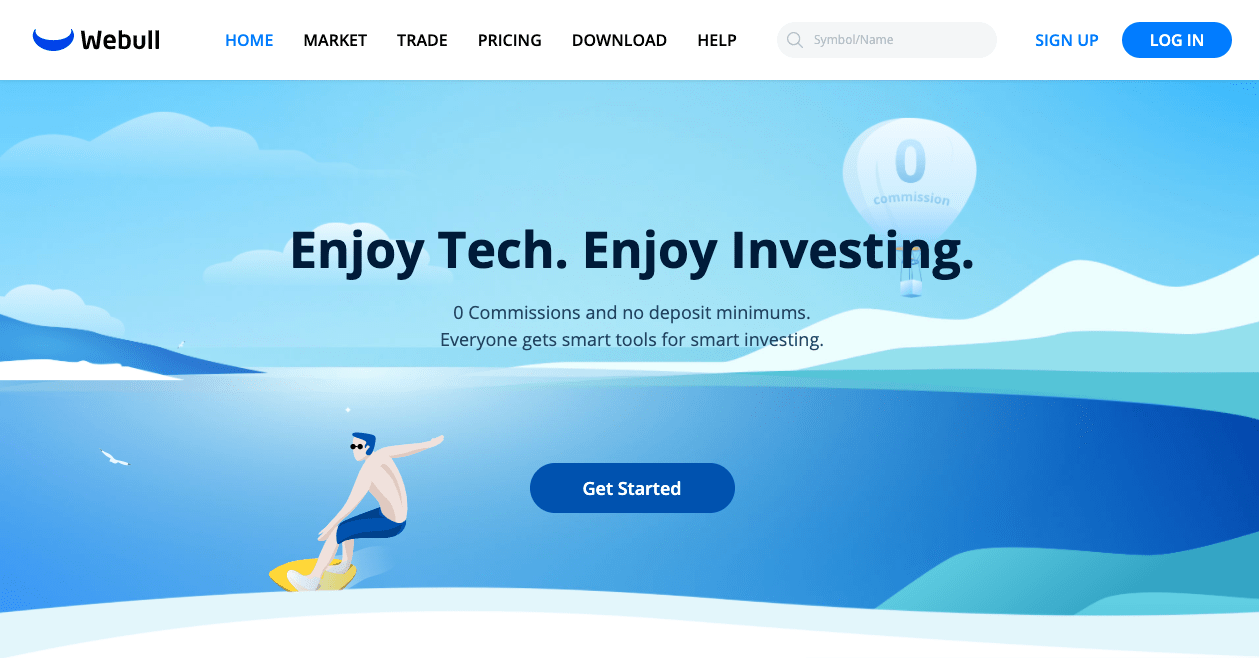
Key Points
- ETF stands for exchange-traded fund.
- ETFs can be bought and sold on the stock market similar to stocks.
- ETFs give your portfolio immediate exposure to hundreds and sometimes thousands of individual stocks, bonds, and other investments.
ETFs changed the world of investing forever.
When they were originally created in 1993, they were an unknown, oscure little investment. Today, ETFs are looked at much different. Even the world’s biggest hedge funds use ETFs.
In this guide, you’ll learn about exchange-traded funds (ETFs) and how you can use them to boost your portfolio in less than 15 minutes. Let’s begin.
Investing in ETFs for Beginners: A Powerful Guide
- What is an ETF?
- How ETFs work
- Why invest in ETFs?
- Benefits of ETFs
- How to start investing in ETFs
- ETFs compared to other investments
- Types of ETFs
What is an ETF?
The simple answer:
an exchange-traded fund (ETF) is a fund that trades on the stock market like an individual stock.ETF stands for exchange-traded fund. But what exactly does that mean? Let’s break it down.
ET = exchange-traded
Exchange-traded simply means it trades on an exchange such as the New York Stock Exchange or Nasdaq. This is also commonly referred to as the stock market.
The stock market is just a broad term used to describe the combination of stock exchanges, including the New York Stock Exchange and Nasdaq.
If you’ve ever traded shares of a stock, then trading ETFs will be familiar to you because they trade the exact same way.
F = fund
A fund is basically a basket of individual investments. It could be stocks, bonds, derivatives, or real estate.
A fund allows individual investors to invest in specific assets and securities that they otherwise wouldn’t have access to.
You’ve probably heard of a mutual fund or a hedge fund. Both these funds allow individual investors to use their money to invest in something.
So, with that information in mind, an exchange-traded fund is a fund that trades on the stock market.
How ETFs work
Now that you know what an ETF is, how exactly do they work?
First, it’s important to understand that when you buy an ETF, you are not actually buying the underlying investments in the ETF.
For example, if you buy a gold ETF, which tracks the movement of gold, you are simply buying a share of a fund that holds gold derivative contracts that are backed by gold.
In other words: you don’t actually own the precious metal itself.
If you buy an S&P 500 ETF, which tracks the movement of the S&P 500 index, you are technically buying shares of the fund company itself, not shares of the 500 companies that make up the S&P 500.
Make sense?
Why invest in ETFs?
If you aren’t already investing in ETFs, you are missing out big.
There are several great reasons you should add ETFs to your investment portfolio.
We’ll discuss all the reasons later in this guide, but the primary reason is diversification. Diversification is a fancy way of the saying, “don’t put all your eggs in one basket.”
By spreading out your money across several different investment securities, like stocks, bonds, and commodities, you reduce your overall risk.
Risk from what, you might ask? I’ll explain with an example.
Imagine this:
You have $1,000 to invest, so you buy $1,000 worth of Netflix stock. Although Netflix has proven to be a great investment over time, the stock will still experience fluctuations in price.
For example, one day Netflix may report bad earnings and the stock price drops 15%. Because your entire portfolio is made up of Netflix stock, your entire portfolio will also fall 15%.
Or perhaps your portfolio is made up of stocks from several companies, but they all happen to be in the technology sector. This can also be a problem. If the technology sector is down, your portfolio will take a hit because you are only invested in technology stocks.
ETFs reduce the risk of your portfolio taking a beating from the day-to-day volatility of the market.
ETFs provide immediate diversification
because they are baskets of hundreds of different investments.For example, instead of buying individual shares of a technology stock (such as Netflix), you can buy a technology sector ETF that contains 10, 20, sometimes 100+ individual technology stocks.
To even further diversify your portfolio, you can buy multiple types of ETFs. For example, instead of only buying technology ETFs, you can buy index ETFs, commodity ETFs, and other industry-specific ETFs.
In the end, by investing in ETFs, you are adding hundreds of other securities to your portfolio which reduces your risk.
» Learn more: Stock Investing Basics: A Powerful Beginner’s Guide
Benefits of ETFs
ETFs have become one of the most popular investment vehicles over the last 25 years. There’s a reason for that.
ETFs have many more benefits than traditional funds, such as mutual funds. Investors prefer the low cost and flexibility of an ETF over a mutual fund any day.
Let’s go over some of the benefits of ETFs.
Diversification
One of the biggest benefits of investing in ETFs is diversification.
A single share of an ETF can give you very broad exposure to hundreds of stocks, bonds, derivatives, and even real estate.
For example, adding a share of the popular Vanguard S&P 500 ETF (VOO) to your portfolio will instantly add exposure to 500 of the largest companies in the U.S.

What does this mean? Well, imagine owning shares of all 506 stocks that make up the S&P 500. That would require an investment of over $30,000 to mimic the movement of the S&P 500 index.
The same thing could be accomplished for much cheaper using ETFs. Buying an S&P 500 ETF will give you the same exposure to all 506 stocks, the same way it would if you bought each stock individually.
ETFs allow you to diversify your portfolio very easily without any of the work, such as picking and researching individual stocks.
ETFs have made building a solid investment portfolio almost effortless
. As long as you own ETFs in various asset classes and sectors, your portfolio will be very well diversified.There are ETFs available in every asset class, sector, and industry of the market. If you wanted to diversify your portfolio and add real estate or commodities, there are ETFs for that.
If you owned Netflix stock but wanted to gain exposure to the entire technology sector instead of just Netflix, you can simply buy a technology ETF.
Trading flexibility
ETFs are traded on the stock market throughout the day like stocks. This is unlike mutual funds and index funds, which are only traded once per day after the markets close.
The ability to trade ETFs on the stock market makes managing your portfolio more efficient. If you need to quickly buy or sell shares of an ETF, you can do that.
Most ETFs have enough trading volume throughout the day that your order would be filled instantly.
Trading volume refers to the amount of shares that are being traded. The more shares being traded, the higher the volume, the easier it is to get your orders filled.
This also means ETFs are highly liquid, meaning you can convert them to cash quickly. Mutual funds and index funds are not liquid, because it could take a couple of days to sell your shares in these funds.
Low cost
Compared to other types of funds, such as mutual funds, ETFs are known to have very low costs associated with them. This cost is called the expense ratio.
The expense ratio
is simply the total cost of the owning shares of the fund. It factors in administrative, management, advertising, and other expenses required to run the fund.For example, the popular Vanguard S&P 500 ETF (VOO) has an expense ratio of 0.03%. This is considered very low.
Say you invested $1,000 into shares of this Vanguard ETF. With an expense ratio of 0.03%, at the end of the year, you’d only pay $0.30 in fees. That’s less than adding a slice of cheese on your burger at McDonald’s.
ETFs are low cost because they are passively managed. This means there are is no management team making day-to-day investment decisions.
This is not the case for funds such as mutual funds and hedge funds, which are actively managed. Actively managed means there is a dedicated management team that makes investment decisions for the fund daily.
This, of course, isn’t free. It comes with a price, and that price is a higher expense ratio. In the case of a mutual fund, expense ratios typically range from 1% to 2%.
These fees add up significantly over the years. In fact, NerdWallet analyzed a variety of investing scenarios and found that even paying a 1% fee could cost you more than $590,000 over 40 years of saving.
Tax benefits
ETFs are known for being very tax-efficient—especially when compared to mutual funds.
To understand why ETFs are tax-efficient, you’ll first need to understand the concept of capital gains.
When you buy an investment and sell it for a profit, this is known as a capital gain. For example, let’s say you bought a share of Apple stock at $430 and then sold it later at $450. You just earned a $20 profit. That profit is a capital gain.
These gains are subject to taxation. The IRS wants their cut.

ETFs are tax-efficient because they are passively-managed funds. This means the fund is not buying and selling investments throughout the day, attempting to beat the market (get a higher than average return on investment).
Instead, it buys investments to mimic the market, which means it holds investments indefinitely.
But how does that make them tax efficient?
Let’s go back to capital gains. A capital gain is a profit from the sale of an investment. Capital gains are subject to taxation.
This means the more you are buying and selling investments and earning profits, the more capital gain tax you face. Because most ETFs are not buying and selling investments, they are not incurring any capital gains.
This is different from most traditional mutual funds that exist to beat the markets instead of simply tracking them. Because a mutual fund is trying to beat the market, it is buying and selling throughout the day and incurring capital gains.
Mutual funds almost always pass these capital gains to the investors who own shares of the mutual fund. This, of course, can eat into your profit significantly.
The only time you are taxed on an ETF is when you sell it for a profit.
And this is assuming the ETF is not inside of a tax-advantaged IRA, such as a Roth IRA, which allows tax-free growth on investments.Dividends
Most ETFs will pass along dividend payments to you, if the fund contains dividend stocks.
Dividends are payments made by companies to shareholders (people who own shares of the stock).
When you invest in certain ETFs, such as the Vanguard S&P 500 ETF (VOO) which contains many dividend-paying stocks, you get paid dividends from those stocks.
You could also invest specifically in dividend ETFs, which only contain dividend stocks.
Simplicity
ETFs have simplified investing. They give even beginner investors access to above average returns, diversification, and tax benefits that otherwise wouldn’t be available.
They’ve made it easier for automated investing apps like Acorns and Stash to thrive, in turn helping a new generation of investors start investing.
And they’ve made it possible to easily invest in a range of assets including stocks, bonds, commodities, and even entire countries.
ETFs make it extremely easy to build a well-performing, diversified portfolio. Before ETFs, this was only possible with expensive funds such as mutual funds. That is no longer the case.
ETFs make it extremely easy to build a well-performing, diversified portfolio,
Before ETFs, this was only possible with expensive funds such as mutual funds. That is no longer the case.How to start investing in ETFs
You can start investing in ETFs with any broker. If you already have a brokerage account that you are happy with, just use that broker.
If you don’t have a broker and are looking for one, I’d recommend either Webull or M1 Finance. Both are free.
Use M1 Finance if you are completely new to investing and would like a more hands-on approach to setting up your portfolio. M1 Finance also has expert pre-built portfolios that you can invest in and get the same results from even billionaire-dollar hedge funds.
» See the review: M1 Finance Review
Use Webull if you are not new to investing and feel comfortable building your own portfolio. Webull offers $0 commission and $0 fees on all trades. The service is completely free.

You’ll also get 2 free stocks valued up to $1,400 when you sign up for Webull using this link.
» See the review: Webull Review
To find ETFs to invest in, use this resource here from ETFdb.com. You can search specific ETF themes and find top ETFs in each category.
Alternatively, you can simply do a Google search to find the best ETFs to invest in for beginners.
However, since you’re already here, I’ll tell you. The best ETFs to invest in for beginners are:
Best ETFs to invest in for beginners
- SPDR S&P 500 ETF (SPY)
- Vanguard S&P 500 ETF (VOO)
- iShares Core S&P Total U.S. Stock Market (ITOT)
- Vanguard Small Cap ETF (VB)
- Schwab U.S. Large-Cap Growth ETF (SCHG)
These will help get you started. You don’t have to invest in all of them to get started. Just pick one, and get started.
ETFs compared to other investments
In this section of the guide, you’re going to learn about how ETFs compare to other popular investments.
ETFs vs. mutual funds
Both ETFs and mutual funds have a lot in common.
For example, both these funds invest in a mix of many different assets. But they are also very different in terms of how they are managed.For starters, a mutual fund is actively managed. This means the investments within the fund itself are managed by a manager or management team.
This inevitably makes the fund more expensive to own because there are more salaries to pay for.
On the other hand, an ETF is passively managed meaning there is not a manager or management team scrutinizing the investments everyday. As a result, ETFs are much cheaper investments to own.
Another difference is that ETFs are traded on the stock market throughout the day, making them highly liquid investments (which means they can be quickly converted into cash).
In contrast, mutual funds only trade one per day once the market is closed and the net asset value (NAV) is calculated.
ETFs vs. index funds
This one is easy. An ETF and index fund are virtually identical.
The major difference between the two is that an ETF can be traded on the stock market. An index fund is actually a type of mutual fund, therefore, it only trades once per day when the market is closed.
Some other small differences come with the cost associated with both these funds. For example, an index fund will typically have a slightly higher expense ratio, and a higher minimum investment than an ETF.
Take the Vanguard S&P 500 index fund. The minimum investment for this index fund is $3,000.
However, look at the ETF equivalent of this index fund, the Vanguard S&P 500 ETF, and it has no minimum investment. As long as you can purchase a single share at the ETF’s current price, then you are invested.
» Learn more about investing with little: 21 Best Ways to Invest $100
ETFs vs. stocks
A stock represents ownership in a company. When you own a stock, you own a part of the company. This is not true with an ETF… sort of.
When you purchase a share of an ETF, you are technically buying part of the fund company that owns the ETF. However, you do not own any of the investments within the ETF.
For example, if you owned the Invesco QQQ ETF which tracks the Nasdaq 100 index, you do not own the stocks that make up the Nasdaq 100 index. The fund company owns the stocks, but you don’t.
Although an ETF can hold stocks, it only acts as a basket for those stocks. When investors like yourself buy shares of the ETF, you are adding exposure to those stocks to your portfolio, but not ownership.
Types of ETFs
ETFs are a relatively new investment instrument. The first ever ETF was the SPDR S&P 500 ETF, which trades under the symbol SPY, created in 1993.
Because of their versatility, ease of use, and benefits, they have increased in popularity fast. In this section, you will learn about all the major types of ETFs.
» Learn more about types of ETFs: 11 Popular Types of ETFs (ETF Categories & Themes)
Stock ETFs
The most common types of ETFs are stock ETFs (also called equity ETFs).
These ETFs aim to mimic the performance of major stock market indexes such as the S&P 500, Dow Jones Industrial Average, and Nasdaq.
To mimic an indexes performance as close as possible, the fund buys the underlying stocks of the index to mirror the index’s movement.
For example, the largest and most popular ETf in the world is the SPDR S&P 500 ETF, which trades under the symbol SPY.
SPY is able to track the S&P 500 index by purchasing all of the stocks included in the S&P 500—which happens to be about 506 stocks (the exact number changes from time).
This also means if you purchase a share of the SPY ETF, you are able to expose your portfolio to 500 of the largest companies in the U.S.
Sector and industry ETFs
Sector and industry ETFs allow you to diversify your portfolio with stocks across multiple sectors and industries.
A sector is an individual part of the stock market. Think of it as a single slice of cake out of the entire cake, which is the stock market.
Within the single slice of cake (sector), there are more individual slices of cake called industries. And finally, within those industries, are individual stocks.
The bigger picture looks like this: stock market > sectors > industries > individual stocks.
Sector and industry ETFs allow your portfolio to gain exposure to many diverse groups of stocks. For example, if you wanted to only invest in pharmaceuticals and technology companies, you could specifically buy ETFs for those sectors.
You could even buy ETFs for industries like education, artificial intelligence, and blockchain. There are ETFs for every sector and industry on the market.
For a full list of market sectors and industries, check out this list here.
Commodity ETFs
Commodity ETF track commodities. Simple enough, right? But what is a commodity?
A commodity is a raw material or agricultural product that can be bought and sold. Examples of a commodity include gold, oil, coffee, wheat, rice, or livestock.
It’s important to know that when you purchase a commodity ETF, you do not own the commodity itself. Just like if you own an S&P 500 ETF you don’t own the underlying stocks.
Instead, when you purchase a commodity ETF, you are technically investing in a derivative contract which follows the price of the commodity. A derivative is essentially a contract between two parties agreeing to a set price and amount of product.
It’s easier to move around derivatives than it is to move actual cows.
Bond ETFs
Bond ETFs allow you to add a diversified selection of bonds to your investment portfolio.
Bonds are issued by companies and governments to raise money. It’s basically a loan that a company or government takes from you.
When you buy a bond, the issuer agrees to pay you back in full with added interest.
A bond is a loan from you to the issuer. The issuer could be a company, the Federal government, or a local government.
This was only a basic rundown of the different types of ETFs. If you’d like to learn more about ETF types, head over to our 11 Popular Types of ETFs article.
Conclusion
ETFs are one of the best investment vechicles of the 21st century. They have allowed investors of all levels to participate in markets that otherwise wouldn’t be accessible.
By adding ETFs to your investment portfolio, you are adding instant diversification, flexibility, tax benefits, and much more.
About the author








